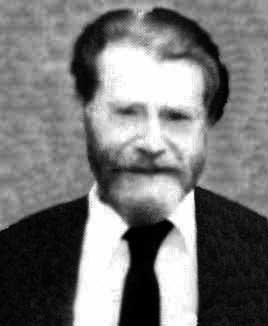


 تاريخ الرياضيات
تاريخ الرياضيات
 الرياضيات في الحضارات المختلفة
الرياضيات في الحضارات المختلفة 
 الرياضيات المتقطعة
الرياضيات المتقطعة
 الجبر
الجبر
 الهندسة
الهندسة 
 المعادلات التفاضلية و التكاملية
المعادلات التفاضلية و التكاملية 
 التحليل
التحليل
 علماء الرياضيات
علماء الرياضيات |
Read More
Date: 24-2-2018
Date: 25-2-2018
Date: 25-2-2018
|
Born: 18 November 1927 in Cottingham (near Hull), England
Died: 13 June 1994 in Isle of Skye, Scotland

John Britton entered Beverley Grammar School in 1939 and he completed his school education in 1946, entering the University College of Hull in that year. He was extremely lucky to be taught by two outstanding group theorists at Hull, namely Bernhard Neumann and Hanna Neumann. Britton graduated from Hull in 1950, although at that time Hull could not award its own degrees and so Britton graduated with an external University of London degree.
Bernhard Neumann left Hull to take up a post in Manchester in 1948, but the Neumann's spent the summer of 1950 in Hull and organised an algebra seminar at their house. Britton took part in that seminar which served as his introduction to research in algebra. Britton then proceeded to study for a Master's degree at Hull, supervised by Hanna Neumann. This degree, again an external London degree, was awarded in 1951.
Britton then proceeded to Manchester where Bernhard Neumann supervised his doctoral studies. His doctoral thesis studied the word problem for groups, extending work by Tartakovskii on problems originally formulated by Dehn.
After compulsory military service, Britton accepted a post at the University of Glasgow as a research fellow. He soon obtained a permanent position on the lecturing staff at Glasgow where he continued his research into word problems in groups. His work attracted the attention of a leading expert in the word problem for groups, namely Bill Boone. Boone invited Britton to the University of Illinois for session 1960-61 and this proved an important event for Britton since it enabled his work to become widely known and hugely influential in combinatorial group theory.
Britton was appointed Reader at the new University of Kent at Canterbury in 1966 and he remained there until he accepted the chair of Pure Mathematics at Queen Elizabeth College London in 1973. Britton remained in London for the rest of his career, retiring in 1988.
I [EFR] first met Britton during his time at Canterbury. He was clearly a shy man, slightly ill at ease in company, yet he treated me with great kindness and I remember his quiet sense of humour during the meal we had in the university refectory.
Britton did not like to tackle numerous small mathematical problems. Rather he was attracted by the biggest problems in his area of combinatorial group theory. His way of working was to be prepared to devote many years of his life to working on one major problem yet even his colleagues were often unaware of which problem he was working on. After making major contributions to word problems Britton turned his attention to the Burnside problem.
Novikov had announced in 1959 that he had proved that, for every n > 71, there was a finitely generated infinite group all of whose elements had order dividing n. However Novikov did not follow up the announcement with the expected published proof and Britton, suspecting correctly that Novikov's proof had run into difficulties, began to work on the Burnside problem himself. Working jointly with Adian, Novikov was able to prove the result, although the proof needed n to be much greater than 71 to work, and they published their result in 1968.
The publication of the proof would have persuaded most people to give up, but not so Britton. He persisted with his monumental task and in 1970 he believed that his work was complete. The proof ran to almost 300 pages and was published in 1973. Sadly, however, Adian found an error in Britton's arguments. As Collins writes in [1]:-
... Adian pointed out that, while individual lemmas were correct, in order to apply them all simultaneously the inequalities needed to make their hypothesis valid were inconsistent. For John the matter was exceptionally unfortunate for he had spent a number of his prime mathematical years on the problem.
Britton never really regained his mathematical confidence after this and was never again prepared to tackle major problems. He did publish three further papers but they are of relatively minor importance. His one further major work was to edit the publication of Turing's collected work in pure mathematics which was published in 1992.
Articles:



|
|
|
|
التوتر والسرطان.. علماء يحذرون من "صلة خطيرة"
|
|
|
|
|
|
|
مرآة السيارة: مدى دقة عكسها للصورة الصحيحة
|
|
|
|
|
|
|
نحو شراكة وطنية متكاملة.. الأمين العام للعتبة الحسينية يبحث مع وكيل وزارة الخارجية آفاق التعاون المؤسسي
|
|
|